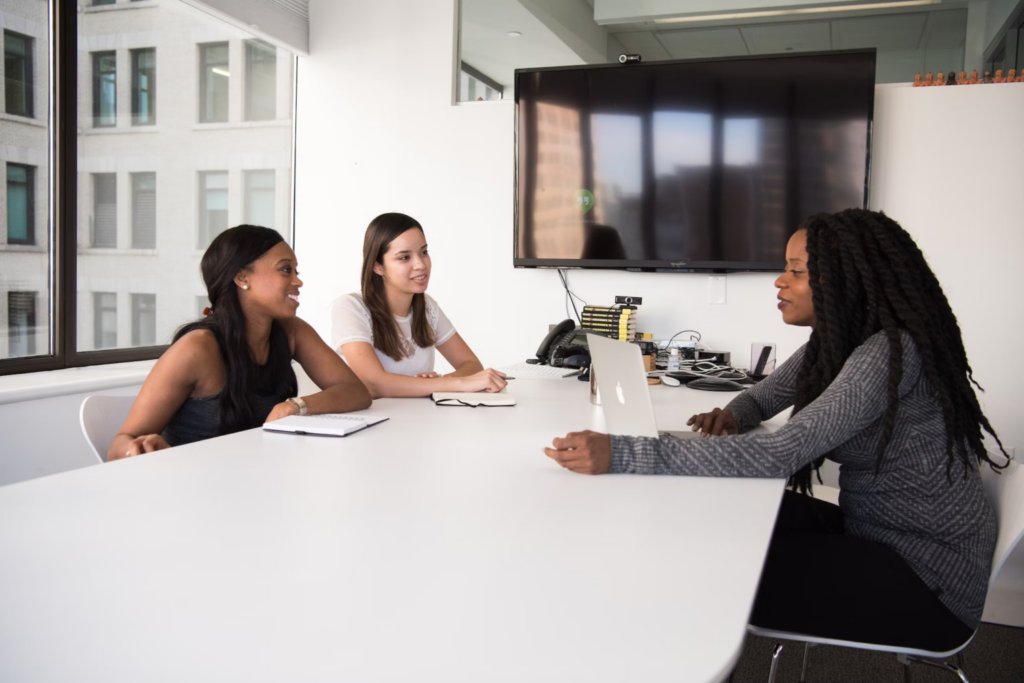The recruitment process becomes necessary as the company grows and new responsibilities arise, ensuring the expansion of the workforce. The execution of tasks and achievement of the organisation’s long-term goals depend on this crucial process.
In other words, the quality of the recruitment process will largely determine a company’s success, which is why the ability to recruit quality employees has become essential for companies.
To optimise this process, every step of the process must be taken into account, from selection and training to the subsequent retention of talent, to reduce the risk of going backward every time an employee decides to leave, taking their skills and abilities with them.
However, how do we know who to choose? How do we determine which characteristics to consider and which to ignore? Well, don’t panic, several strategies can be implemented to optimise the recruitment process within your company, and we will tell you all about them in this article.
What is the recruitment process?
The recruitment process is the way in which companies add new employees to their workforce. Whether it is to fill a vacancy that has become vacant or a vacancy that has just opened up, the recruitment process involves several stages that aim to find the best talent for the organisation.
Human talent is one of the most important assets within organisations. For this reason, we could say that the recruitment process is one of the most relevant within any company, as it is the filter that will determine who will be part of the team working to achieve business goals.

Recruitment is more than just choosing a candidate. It is a strategic process that involves identifying, evaluating, and selecting the right individuals to contribute to the growth and success of the company.
The recruitment process, therefore, is not straightforward. It involves a process of analysis in which all the characteristics of each person are examined so that the candidate with the skills and requirements necessary to perform the functions of the vacancy in the best possible way is selected.
Importance of a good recruitment process
For a company to succeed, it must rely on the constant work of a committed workforce, where everyone pursues the same goals. Therefore, the quality of the employees chosen for these roles is crucial. This positions the recruitment process as one of the most important KPIs in the HR department for the effective management of an organisation.
Moreover, effective recruitment represents a number of strategic benefits for the company. Firstly, it ensures that highly competent individuals fill new positions. Secondly, if done properly, this process mitigates the negative impact that employee turnover has on productivity.
To help you in this process, ifeel has developed a series of resources that can help you optimise your recruitment process.
| Resources to improve your selection processes | ||
| 1. | Blog: Quiet hiring | Quiet hiring: An HR strategy for adapting to difficulties |
| 2. | Guía: Avoiding cognitive biases in your selection process | Evaluate your selection processes and learn how to reduce cognitive biases. |
| 3. | Blog: Learn how to spot 6 recruitment red flags | Learn how to spot the warning signs when interviewing candidates. |
Join the global leading solution in mental well-being
The most common techniques used in the recruitment process
In today’s world, the recruitment process relies on using different tools to carry out tasks. In most cases, modern processes combine the use of these techniques, which feed on each other. Among the most common are:
- Structured interview: The structured interview is one of the most common and widely used techniques. When we talk about a structured interview, the interviewer has a series of questions already established and questions the candidate about their work history, expectations, skills, etc., to find out if the candidate’s skills match those required by the position.
- Semi-structured interview: The main difference with respect to the previous one is that there is more flexibility when asking questions in the semi-structured interview. The same order or structure of questions is followed, but the interviewer has more “room for manoeuvre” to let the conversation progress and can inquire about the most relevant points.
- Non-conventional interview: This consists of accompanying the interview with activities or exercises that allow the interviewer to get to know other aspects of the candidate related to their personality, values, etc.
- Knowledge assessments: These are used to assess a specific skill of the interviewee. It consists of presenting the candidate with an activity, test, or problem to solve that resembles what they will face if they get the job. These tests help interviewers make sure that the person will be able to do a good job.
- Personality tests or psychometric tests: These are used to assess the psychological characteristics of the candidate, i.e., attitudes, personality, etc. These tests usually represent an important part of the recruitment process, and they must be carried out by a psychologist, a professional in the field, who can interpret the results in the best possible way.
- Role-playing or simulation of a situation: This is an exercise in which a situation is posed, and the candidate is asked to act or respond as they would if they had to face that situation if they were to get the job. Role-play techniques can be used to simulate the situation described.
- Employer branding: This is a modern technique that aims to market the company as a good workplace to attract the best candidates through the company’s reputation.
- Headhunting 3.0: In line with the previous point, this recruitment technique aims to leverage social networks and job portals to find the ideal candidates for the positions offered.
- STAR technique: This type of technique, whose acronym stands for “situation, tasks, actions, and results,” is based on the applicants’ skills, seeking to eradicate any bias related to gender, age, or other aspects. In other words, it focuses on achievements and performance in particular situations beyond what is expressed in the CV. To do this, the interviewer establishes a specific situation of the candidate’s profession and asks from their answers: how they faced it, how they overcame the challenges, and the results obtained during those years.

Tips to optimise your recruitment process
For your recruitment process to be successful, you need to pay attention to every detail: planning, categorising, and organising your work time and information in order to make informed decisions. Here are the essentials that will allow you to optimise each phase of this essential HR process.

1. Define the position and the characteristics you are looking for in the candidate
The first step in optimising your recruitment process is to thoroughly understand the position to be filled. To do this, make a detailed description of the position to be filled, identifying the characteristics, competencies, skills, and technical knowledge necessary to achieve the objectives. To do this, seek the support of the manager or supervisor of the corresponding area so that no important aspects are left out. By identifying the skills needed for the position, you will know what to ask during the interview and which competencies or skills to pay special attention to.
2. Consider the company’s needs
Just as no two people are alike, no two companies are alike. Each company has its own work culture and dynamics. Therefore, when assessing candidates, remember that the person you choose must be a good fit with the organisation. Therefore, a thorough knowledge of the company is essential in order to assess candidates properly.
3. Harness technology in the process
The technological tools available today can help you automate and improve some of the tasks within the selection process. This will allow you to speed up decision-making by reducing the time spent on mechanical tasks.
4. Search for candidates
As mentioned before, nowadays, social networks or job portals are used as a recruitment strategy, in which companies are in charge of looking for candidates that fit the profile and offer them to apply for the vacancy, even if they are not actively looking for a job. This way, you complement the job applications with the new profiles you get through this technique and thus ensure that you have the best candidates to make a decision.
5. Review applications and make an initial selection
Once you have the list of candidates (both those who applied on their own and those you looked for through headhunting), you should conduct a first review in which you discard the profiles that do not fit the vacancy. Then, with the remaining group, you can have a first telephone or email interview in which you clarify the expectations of the role, which will serve to make that first selection of the profiles that you would really want to fill the position.

6. Assess competencies beyond the CV
Once you have the list of “official” candidates, you should assess their skills. In doing so, don’t just look at what is written on their CV. Seek to understand the candidate’s knowledge, skills, and competencies. To do this, use all available tools and prepare semi-structured interviews based on the competencies required for the position to ensure a complete candidate assessment.
7. Prepare and conduct interviews
The methodology used for the interview will depend on the type of employee you are looking for, the type of job, etc. Therefore, tailor the questions according to the skills needed for the position, seeking to better understand each candidate and verify the information provided in their CVs.
8. Make the most of assessments
Complement interviews and conversations with assessments that allow you to learn more about the candidate’s personality, skills, and reactions to specific situations. These will provide a more well-rounded view of the candidate. However, always remember to seek the support of expert psychologists before interpreting any results.
9. Choose the final candidate and explain all stages of the onboarding process
Once each participant has been interviewed, a decision must be made. In many cases, alternatives are considered if the next steps in the recruitment process are not carried out.
Then, during the recruitment process, both the company and the candidate should be transparent. Make sure to address all questions about working conditions, location, start dates, etc., to avoid future misunderstandings.
10. Take care of the onboarding process by following up
Recruitment does not end with hiring. Once the person starts, you must ensure they have the necessary tools to fulfill their role and provide support and advice for everything they need. This way, you start to build an environment in which their mental well-being at work is handled from the first minute they are part of the company.
It is also important to follow up in the short and medium term, both in terms of the new team member’s experience, as well as their performance within the company. Whether through satisfaction surveys or performance reviews, such follow-up will help you ensure that the choice was the right one and that both the area and the new employee are satisfied.

Helping companies unlock their potential
At ifeel, we know that recruitment is one of the most important strategies in today’s business landscape. To take things to the next level, consider implementing a management tool to improve the execution and monitoring of development projects.
To this end, our team of expert workplace well-being psychologists has created a mental well-being solution for companies, which improves talent retention, reduces presenteeism, and reduces employee stress.
With our mental well-being solution, your company’s HR managers can receive personalised, data-driven advice on improving mental health at work. In addition, this solution offers employees a 360° mental well-being service structured at different levels according to their needs. Try our solution now to see how it could help you.
We hope you found this article on the essentials of optimising the recruitment process interesting. If you would like more information, simply request it, and we will contact you as soon as possible.









